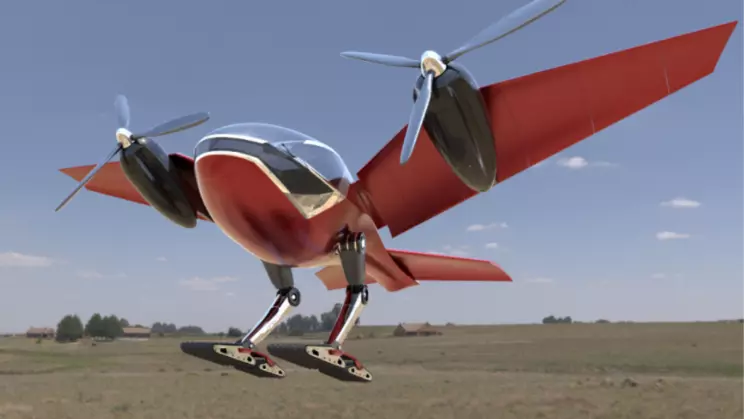
Biomimicry, also known as biologically inspired engineering, involves the study and imitation of nature to help solve human challenges. The aviation sector is filled with examples of biomimicry which have provided engineers with invaluable insights from the flight of birds to the movement of sharks.
As a result of carefully studying the movement of animals, we have been able to make aircraft lighter and more fuel-efficient. Few projects, though, look as close to the real thing as the Macrobat, a new bird-shaped air taxi that can take off with a nearly vertical trajectory.
Taking Biomimicry To The Extreme
In an attempt to make aircraft more efficient in every possible way, aeronautical engineers have long turned to nature for answers. The focus on biomimicry started with studying how birds extend their wings to reduce air drag and help them stay higher without using additional energy, almost like a glider attempting to increase lift and reduce drag.
When birds want to move faster, they close their wings but what about using cybernetic legs to land? While copying concepts from nature might seem straightforward, the team at the PHRontier for Agile Complex Technology sYstem evoLution (PHRACTYL), is looking to manufacture working prototypes such as the Macrobat.
Electric Near Vertical Take-Off and Landing (NVTOL) Aircraft
PHRACTYL wanted to build a flying machine using electric propulsion but understood the limitations of current battery technology. As such, they turned to biomimicry and decided to work more on the aerodynamic design of the aircraft until they came up with the fascinating Macrobat concept.
According to the team, when it takes off, the Macrobat will use its bird-like legs like landing gear to lift the passenger pod and then tilt it backwards to create a suitable angle for its shapely wings.
From there, the propulsion system will kick in and create the necessary lift to take the craft into the air. Unlike other air taxis, however, the lift-off won’t be straight up which is where the newly coined term comes in, i.e. “Near Vertical Take-Off and Landing” or NVTOL for short.
Specifications Of The Macrobat
Thanks to biomimicry of the highest level, once the Macrobat air taxi is airborne, the landing gear will retract to reduce drag. This allows it to fly like any other aeroplane with a claimed range of 93-miles (150 km) and a top speed of 111 mph (180 kph) with a 330 pound (150 kg) payload.
PHRACTYL confirmed that its unique landing gear with tracks makes it possible for the Macrobat to land in rough terrain. However, considering the design, the landing has to be done at a very low speed to avoid the craft from toppling over.
They are currently working on several options for the propulsion system, including deploying it as single units on each wing or as a series. The wing is certainly more interesting than it appears but since the intellectual property is not protected by a patent yet, PHRACTYL is not revealing too much.
Biomimicry With A Modular Approach
As with other air taxis, the Macrobat can be flown by a human pilot either in the pod or remotely from the ground. To ensure the Macrobat is green, clean and future-ready, PHRACTYL has claimed that they will build the aircraft using sustainable material in a modular fashion. This will make it much easier to repair with more cost-effective spare parts.
While it may seem far-fetched, we have seen some tremendous innovations recently, especially in aviation. With so much potential, thanks to biomimicry and advanced aerospace engineering, this project is certainly one for the books and we can’t wait to see more updates on the Macrobat. Who knows, it might be the catalyst for something even bigger and better.
For more interesting articles on all things engineering, manufacturing and technology, please follow and share our blog. You can also join the conversation on social media using the hashtag #PRVtech.


 Mail:
Mail: 



